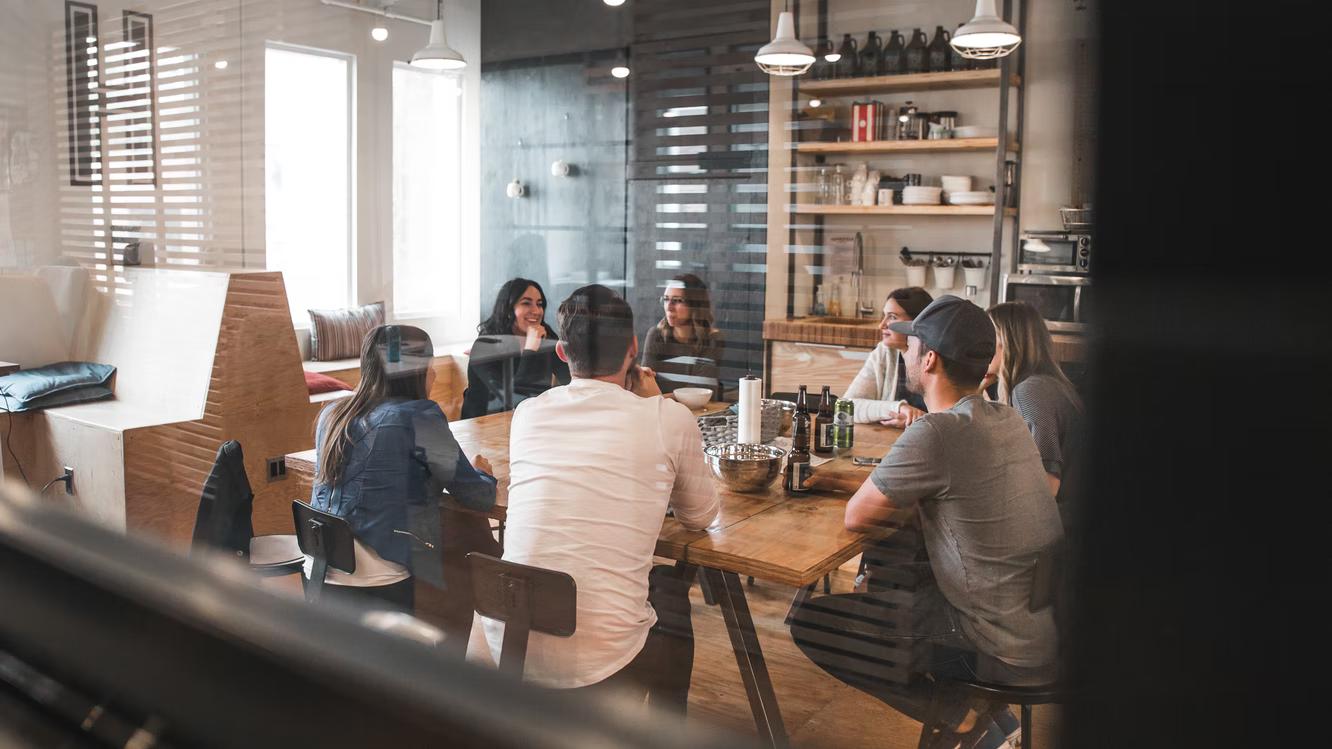Changes in office design, workplace culture and professional norms reflect changes in our culture, society and economy. Trends in fashion and design, the advancement of technology and evolving societal values all have a direct impact upon our workplaces.
Our workplaces and professional norms have developed throughout history and have been informed by important global events. Just as the Covid-19 pandemic has, and will continue to have, an evolutionary impact upon the workplace, so other moments in history have informed the development of office culture.
Our Q&A will answer any questions you have ever had about where our western workplace norms come from and pose thoughts about where our workplace norms are heading next:
Q. Where did the office come from?
A. The Ancient Romans had their own business district in Rome and in the centre of each Roman town was a forum which was surrounded by shops, business offices and government buildings. Indeed, the Latin word ‘officium’, which loosely means ‘bureau’, is the root for our word ‘office’.
However, the home office has been much more common throughout history. It wasn’t until the 18th century that dedicated office buildings were built in Britain (the first were the Old Admiralty Office and East India House, housing the HQ of the East India Trading Company). Before then, ‘office’ work was carried out at home, shopkeepers lived above their stores, and assistants and servants would reside where they worked, commute-less but unable to escape their workplaces.
Q. Is the open-plan office a 21st-century invention?
A. The first open-plan factory with few interior walls actually opened in 1906 in New York (it was the Larkin Administration Building).
These 20th-century open-plan offices were designed to increase efficiency, supervision and regimentation. Workers sat in long rows and were closely overseen by supervisors, like in factories.
As steel frame construction and elevators developed, skyscrapers made it possible to cram large workforces into a smaller square footage - a huge benefit for business owners as land became increasingly expensive. Workers were only further cut off from the outside world with the invention of electric lighting and, later, air-conditioning.
But, communication was changing and the invention of the telephone, typewriters, calculators and electric lighting would fundamentally alter the workplace.
Q. Is the trend for ‘green’ offices new?
A. The regimentation of the factory-line open plan office was overthrown in Europe in the 1950s and 60s with the advance of Bürolandschaft - office landscaping. The aim of these loosely divided, plant-bordered areas was to improve cooperation between co-workers. The rise of workers’ councils and unions in Europe saw the rise of these ‘socially democratic’ workplaces, which sought to improve working conditions.

Q. Are office cubicles likely to make a return?
A. The dreaded cubicle office became popular in the 1980s as a counter-reaction to more ‘socially democratic’ green office designs. These cheap cubicles were also a response to the rise of corporate culture and an increase in the number of middle managers, who needed privacy for their work and were too important to share workspaces but not important enough to get a private office or window. These module offices were flexibly designed and did allow for a level of office personalisation, but they were mainly about profitability and productivity and therefore were depressing and utilitarian.
In today’s working climate it seems unlikely that office cubicles will make a widespread return as workers are much more mobile due to huge advances in technology. Open plan co-working spaces, hot desking, telecommuting, flexible working arrangements and working from home options have only grown in popularity. When combined with the increased costs of renting or owning an office building and rising interest in a positive work-life balance, it doesn’t seem likely that we will be returning to soulless cubicles.
Q. What workplace trends are currently on the rise?
A. Co-working spaces are once again popular elements of office design, as mobile workers can carry their work with them on the cloud and use relatively small digital screens. The costs of running and owning an office building are undoubtedly putting newer businesses off setting up traditional workspaces, and companies offering co-working spaces for freelancers and start-ups alike are profiting.
High-tech conference rooms and the wonders of Zoom have allowed for cost-efficient virtual meetings. Apps and smartphone technology can now run hot desking offices, alerting employees as to the location of free desks and allowing the office environment to be controlled to an unprecedented extent, from temperature control to ambient noise.
The popular focus on work-life balance, perhaps a consequence of the Covid-19 pandemic and also of the work-until-you-burnout culture of many workplaces, is having an impact on workplaces too. Office design is considering green spaces, employee health and happiness, and inspiring collaborative working spaces more than ever before.
Given that offices were invented to improve communication and efficiency, the developments in technology and cultural values about the importance of work-life balance may soon make the traditional office - and its values - obsolete.